












Getting to ‘Y’ (GTY), a program of UP for Learning, began in Vermont schools in 2008 as a collaboration between UP, the Vermont Agency of Education (AOE), and the Vermont Department of Health (VDH). Through GTY, teams of middle and high school students—working alongside adult partners—are trained by UP to lead a cycle of Youth Participatory Action Research (YPAR). They use data from the Centers for Disease Control and Prevention’s Youth Risk Behavior Survey (YRBS), putting that data back into the hands of the young people who provided it and empowering them to make meaning of the results.

Back at their schools, GTY teams convene diverse groups of students to analyze their most recent, local YRBS data. Together, they identify top strengths and concerns, explore potential root causes, and consider possible solutions. They then host Community Dialogue Events, inviting the broader community to engage with their findings and contribute to shaping action plans. From there, teams take meaningful steps to address a key concern, celebrate their progress, and continue the work—watching the ripple effects of their efforts grow.
At UP, we are proud that GTY has been recognized as an evidence-based practice by the Vermont Department of Health and a best practice by the Association of Maternal and Child Health Programs (AMCHP). These designations are a testament not only to GTY’s purpose and design, but also to the dedication of the youth and adult partners who bring it to life—and to the community members who value youth voice.
This year, GTY’s reach expanded significantly. After years of capacity building, we launched a statewide replication in New Hampshire—doubling the number of active GTY teams (read more on page 16!). We also partnered with the Indiana Department of Health’s Division of Maternal and Child Health to help build their capacity for future GTY implementation and replication, with support from AMCHP (see page 20 for more details!).
We are so grateful for the passion, co-learning, and partnership that we enjoyed everywhere we worked on GTY this year. The youth, educators, and prevention partners who bring this program to life are truly inspiring.
The following project summaries were provided by each of the GTY teams. Unless otherwise mentioned, teams used 2023 YRBS data.
Barre, Vermont
The middle and high school teams at BUUSD launched their Getting to ‘Y’ program with strength and continued to build momentum throughout the year. After their training in November, the team met regularly to analyze their YRBS data and ultimately hosted a successful Community Dialogue Event, drawing 22 participants—including the superintendent, a school board member, and youth from neighboring schools. In response to their findings, the team is pursuing a range of action strategies, including: working with local businesses to reconsider the placement of substances and substance-related products to reduce visibility and access; launching public awareness campaigns to educate parents on the harms of vaping; reinforcing the school’s weapon policy through regular announcements and consistent enforcement; and exploring the installation of metal detectors to enhance school safety.


Sponsored by the Vermont’s Project AWARE: The Vermont Department of Mental Health was awarded a 5-year grant from the Substance Abuse and Mental Health Services Administration (SAMHSA) for Project AWARE. Vermont Project AWARE is a joint effort between the Agency of Education (AOE) and the Agency of Human Services, Department of Mental Health (AHS/DMH) and three communities to promote ongoing collaboration at the state and local level regarding best practices to increase awareness of mental health issues, enhance wellness and resiliency skills for school age youth, and support system improvements for school based mental health services.
School counselors and other student support services
63% reported easy to get vapes
24% purposely hurt themselves (without wanting to die)
Media, challenges in school
Wanting to feel better
Mental health challenges
10% threatened/injured with a weapon in the past year
Seeing something and not saying anything
Homelessness
Easy to get online
Burlington, Vermont
The leadership team at EMS took a multi-pronged approach to their Getting to ‘Y’ action plan. Some initiatives were carried out in partnership with their BeAbove team, including a Community Dialogue Night featuring multiple tables and topics, and a school-wide Natural Highs assembly that engaged students through interactive, daytime-TVstyle games. For Take Down Tobacco Day (April 1), the team gave a verbal presentation and distributed 40 Quit Kits to students, friends, and family members. They strategically highlighted YRBS data showing how many students don’t smoke or vape—using positive norms to motivate visitors and underscore the importance and achievability of quitting. In May, the team also organized a Self-Care Week to promote well-being, healthy choices, and substance use prevention. They collaborated with BeAbove to create goody bags filled with resources and treats for all participants.
Sponsored by United Way Northwest: Our mission is to build a stronger Northwest Vermont by mobilizing our community to improve people’s lives. United Way isn’t just our name – it’s how we work. We bring together individuals, nonprofits, businesses, and government entities to fight for a strong, vibrant, and healthy community. We fight for the education, financial stability and health of every person in Chittenden, Franklin and Grand Isle counties.


97% of Burlington High School students don’t smoke—and similar numbers for local middle schools
Sponsored also by Burlington Partnership for a Healthy Community: BPHC is Burlington’s substance misuse prevention coalition. We collaborate with a network of partners and public health experts on initiatives that address the root causes of substance misuse. We take action to help imbed wellness into the community culture and create protections to help youth thrive.
96%
96% percent of Burlington’s Middle School students do not vape

88% of Burlington High School students do not vape
Vermont
On November 4, 2024, a diverse group of 21 sixth, seventh, and eighth grade students from HMMS came together to analyze 2021 YRBS data. They identified existing strengths within their community and began developing action steps to address key areas of concern. Guided by peer leaders, the students moved through the data analysis process with purpose and insight. Just a few weeks later, on November 20, 2024, these student leaders facilitated a Community Dialogue during the Hartford Community Coalition’s Annual Meeting, where they shared their findings and added to their proposed action steps. They introduced a concept for a guidance model designed to help parents and caregivers navigate meaningful conversations with their children—such as how to talk about mental health or offer context and support around “coming out.” Another idea focused on providing conflict resolution training for older students and adults. The 8th grade members of the team are already looking ahead and plan to carry their Getting to ‘Y’ work with them into high school next year!
Sponsored by the Hartford Community Coalition: A collaborative group of community members designed to sup -
Less than 1% reported trying marijuana
12% of HMMS students have seen someone be beaten/shot/stabbed (up 3% since last YRBS)

Hartford team members
port and promote the wellness of individuals and families. Their vision is for Hartford to be a supportive community where people embrace and achieve their personal, professional, emotional, and physical well-being. The coalition acts to reduce the stigma and impact of alcohol and drug use, food insecurity and mental health in support of the development of a healthy, safe, and resilient Hartford.
97% of femaleidentifying HMMS students think it is wrong or very wrong for middle school students to use EVPs
7% of male-identifying students at HMMS have ever taken a prescription drug differently than prescribed
Less than 1%
report they rarely or never wore a seatbelt
31% of HMMS 8th graders report their mental health was most of the time or always not good
The team at HMS began their Getting to ‘Y’ training in January and quickly moved through the program by the end of the school year. After analyzing the YRBS data and comparing it with observational data gathered from around the school, they identified vaping as a key concern. In response, they organized a Vaping Awareness assembly aimed at preventing more students from starting to vape and raising awareness about its risks.
Sponsored by United Way Northwest: Our mission is to build a stronger Northwest Vermont by mobilizing our community to improve people’s lives. United Way isn’t just our name – it’s how we work. We bring together individuals, nonprofits, businesses, and government entities to fight for a strong, vibrant, and healthy community. We fight for the education, financial stability and health of every person in Chittenden, Franklin and Grand Isle counties.

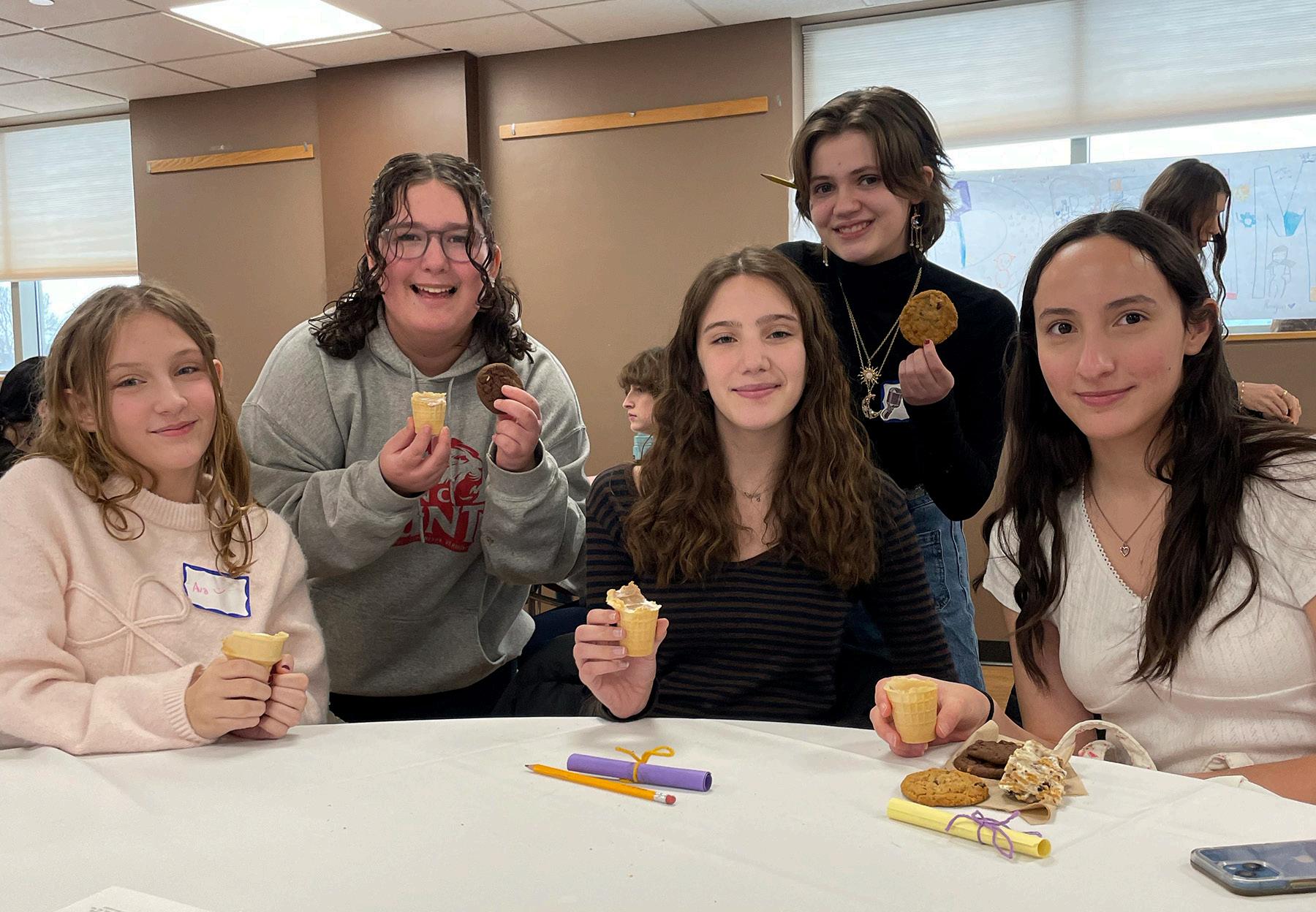
Sponsored also by Burlington Partnership for a Healthy Community: BPHC is Burlington’s substance misuse prevention coalition.

63% of Burlington School District students strongly agree or agree that in their community they feel like they matter.
30% of female-identifying students report that their mental health was most of the time or always not good more frequently compared to 9% male-identifying students
We collaborate with a network of partners and public health experts on initiatives that address the root causes of substance misuse. We take action to help imbed wellness into the community culture and create protections to help youth thrive.
42% of LGBTQ+ youth report that their mental health was most of the time or always not good more frequently compared to 10% of heterosexual/cisgender youth
Body image ideals
Social media
Societal expectations for appearance
Cliques, exclusionary behavior
Objectification, sexualizing females
MAUMS integrates the Getting to ‘Y’ program with their CHOICE group, dedicating focused 25-minute sessions over several months to explore the YRBS data. At the same time, they completed the Calm Down Box project initiated by last year’s group, distributing supportive resources and fidgets to offices and common spaces where students seek help. This year, they have already shared their work during a Project Alliance coalition meeting (May 15), presented to the Town of Bennington Select Board (June 9), and served as guest speakers for over 75 attendees at MAUMS Family Night in April. The MAUMS CHOICE team is finalizing their action plan for the remainder of the year and beginning to look ahead.
Sponsored by ACT Bennington: Alliance for Community Transformations (ACT) is a prevention coalition focused on empowering youth to make healthy choices through substance use prevention education, leadership development, and health equity initiatives. ACT empowers communities to act in collaboration to prevent youth substance use and reduce substance use across all ages and promote greater wellness and long-term health in the greater Bennington area.
75% of youth report that their parents/ guardians think it is very wrong for youth to use substances
42% of femaleidentifying students felt sad or hopeless, past year (compared to 20% male)

Sponsored by Vermont Project AWARE: The Vermont Department of Mental Health was awarded a 5-year grant from the Substance Abuse and Mental Health Services Administration (SAMHSA) for Project AWARE. Vermont Project AWARE is a joint effort between the Agency of Education (AOE) and the Agency of Human Services, Department of Mental Health (AHS/ DMH) and three communities to promote ongoing collaboration at the state and local level regarding best practices to increase awareness of mental health issues, enhance wellness and resiliency skills for school age youth, and support system improvements for school based mental health services.
92% of students feel there are adults at home they can go to for help
36% of femaleidentifying students and 47% LGBTQ+ students have ever harmed themselves without wanting to die
13% of MAUMS students currently vape (2% female / 6% male)
91% of students always have enough food at home to eat
8% MAUMS students currently use cannabis, compared to 4% statewide. (13% female / 4% male)
Normalization of substance use/ease of access to substances
Systemic challenges
Just like their middle school counterparts, MAUHS integrates the Getting to ‘Y’ program with their CHOICE group. This student leadership team took a thoughtful and thorough approach, analyzing both the YRBS and supplemental data—such as the Core Measures Student Survey—to inform the direction of their action project.
Currently, MAUHS CHOICE is planning a skill-share exchange “fair” for Fall 2025, where community leaders, school staff, and fellow students will share practical “adulting” skills while connecting students to valuable resources. Topics may include: how to access free community resources; how to administer naloxone; financial literacy; and where to find substance use and mental health support at school. The vision is to create a supportive, stigma-free space that empowers youth to ask for help and recognize themselves as both knowledge-holders and knowledgesharers. Another early-stage idea is a vape-return program, tied to growing concerns about the accessibility of cannabis—particularly THC vapes increasingly confiscated at school. The team is planning to host guest speaker Tom Fontana from UVM for a presentation on cannabis use prevention and the concept of a “T-break.” MAUHS CHOICE
92% of students have hobbies they enjoy
66% of HS students say it would be sort of easy or very easy for them to get cannabis

Mt. Anthony Union High School team members.
students also presented alongside their middle school peers at Project Alliance and Bennington Select Board meetings and are currently planning an event to address the rise in THC vape use.
Sponsored by ACT Bennington and Vermont Project AWARE: See page 7 for descriptions.
62% of students reported there is at least one teacher or adult they can talk to if they have a problem
21% of HS students report that they don’t always have access to basic needs (soap, period products, clean clothes)
ROOT CAUSES Poor mental health/stress and trauma (particularly family issues)
Peer pressure
41% of students strongly agree or agree that in their community they feel they matter to people
66% of female-identifying students ever used alcohol and 29% report current use of alcohol (compared to 42% / 20% for male-identifying students)
Normalization of substance use/ease of access to substances
Systemic challenges
The Project All Together Now team at MMUHS has embraced the Getting to ‘Y’ program as a springboard for informed, in-depth conversations about their community— alongside their community. They began by organizing a collaborative discussion with the MMU Student Assistance Program (SAP) counselor, the Burlington VDH Prevention Consultant, and Project All Together Now staff to review concerns surfaced in the YRBS survey data, as well as other sources like the 2024 All Together Now Feedback Survey and the 2024 Vermont Young Adult Survey.
Building on that foundation, the team used Getting to ‘Y’ activities to engage a larger group of students in reflecting on the school’s Hazing, Harassment, and Bullying Policy. Inspired by what they have learned, the team is eager to follow up with district leadership to co-create next year’s activities and continue building a stronger, more inclusive school community.


Sponsored by United Way Northwest: Our mission is to build a stronger Northwest Vermont by mobilizing our community to improve people’s lives. United Way isn’t just our name – it’s how we work. We bring together individuals, nonprofits, businesses, and government entities to fight for a strong, vibrant, and healthy community. We fight for the education, financial stability and health of every person in Chittenden, Franklin and Grand Isle counties.
Sponsored also by Project All Together Now: Project All Together Now is a youth led nonprofit organization which ded -
42% of femaleidentifying students and 52% of LGBTQ students reported that their mental health was most of the time or always not good (compared to 19% of male-identifying students and 21% heterosexual/cisgender)
21% of students report that someone has ever done sexual things to them that they did not want (33% female-identifying students, 11% of maleidentifying students, 36% LGBTQ students, 16% heterosexual/ cisgender students)
icates itself to promote equitable mental health and well being. We are rooted in collaboration across our community, and our mission is to provide resources and support to youth that empower them to thrive. We provide services or activities that are open to all people in the target population for those services or activities, without regard to race, color, religion, gender, national origin, age, military status, sexual orientation, pregnancy, ancestry, ability, or any category protected by law.

10% of students would most likely have someone to talk to other than a family member to get help
30% of students don’t feel like they matter to their community
The team at NMHS took a holistic, school-wide approach to their action plan by integrating the Getting to ‘Y’ program into their Health and Wisdom class. Together, they analyzed the YRBS data and then launched five student-led projects in response. One group began advocating for the hiring of additional mental health professionals, another pushed for the implementation of school-sanctioned mental health days, and a third focused on improving substance-use prevention programs—just to name a few.

44% of youth struggle with mental health
Boredom
Workload
Anxiety/stress
42% of high school students have drank alcohol by senior year
Vermont
In their analysis of the YRBS, the team at PAML identified root causes of student challenges on three levels: personal, school, and family. Each contributed to students’ mental health struggles, identity challenges, overloaded schedules, and limited awareness of or access to support. In response, the team chose to promote kindness and inclusion through a range of school activities, including anti-bullying initiatives. They have also made significant progress toward establishing a Gender and Sexuality Alliance (GSA) at their school, with support from Outright Vermont. They are currently working to recruit a supporting advisor and secure a dedicated space for the club to meet.
80% of students participated on a sports team

92% of students felt it was wrong for someone their age to use electronic vapor products (EVPs)
15% of students ever made a plan how they would attempt suicide
Mental health struggles
Identity struggles
Overloaded schedules
95% of students responded that their parents or guardians feel it would be wrong or very wrong for them to use EVPs
7% of students ever tried to kill themselves — higher risk for LGBTQ+ youth
Not knowing where to go for support
Parents lacking skills to listen and support children
The junior and senior high leadership clubs at PrHS joined forces to launch their first annual Getting to ‘Y’ Wellness Awareness Day—a student-led initiative focused on promoting physical and mental health throughout the school community. After analyzing YRBS data, the team recognized a clear need for a school-wide event to support and strengthen student well-being. Throughout the day, students engaged in a variety of activities designed to foster connection, relaxation, and resilience. Offerings included music, art therapy, yoga, meditation, walking, fitness sessions, crisis prevention resources, and post-graduate planning opportunities. The event concluded with an all-school assembly, bringing the community together to reflect on the importance of wellness, support, and the power of student voice. PrHS is proud of the success of its first Wellness Awareness Day and is committed to making it a lasting annual tradition.
83% of our students in grades 7-12 have struggled with mental health-related issues
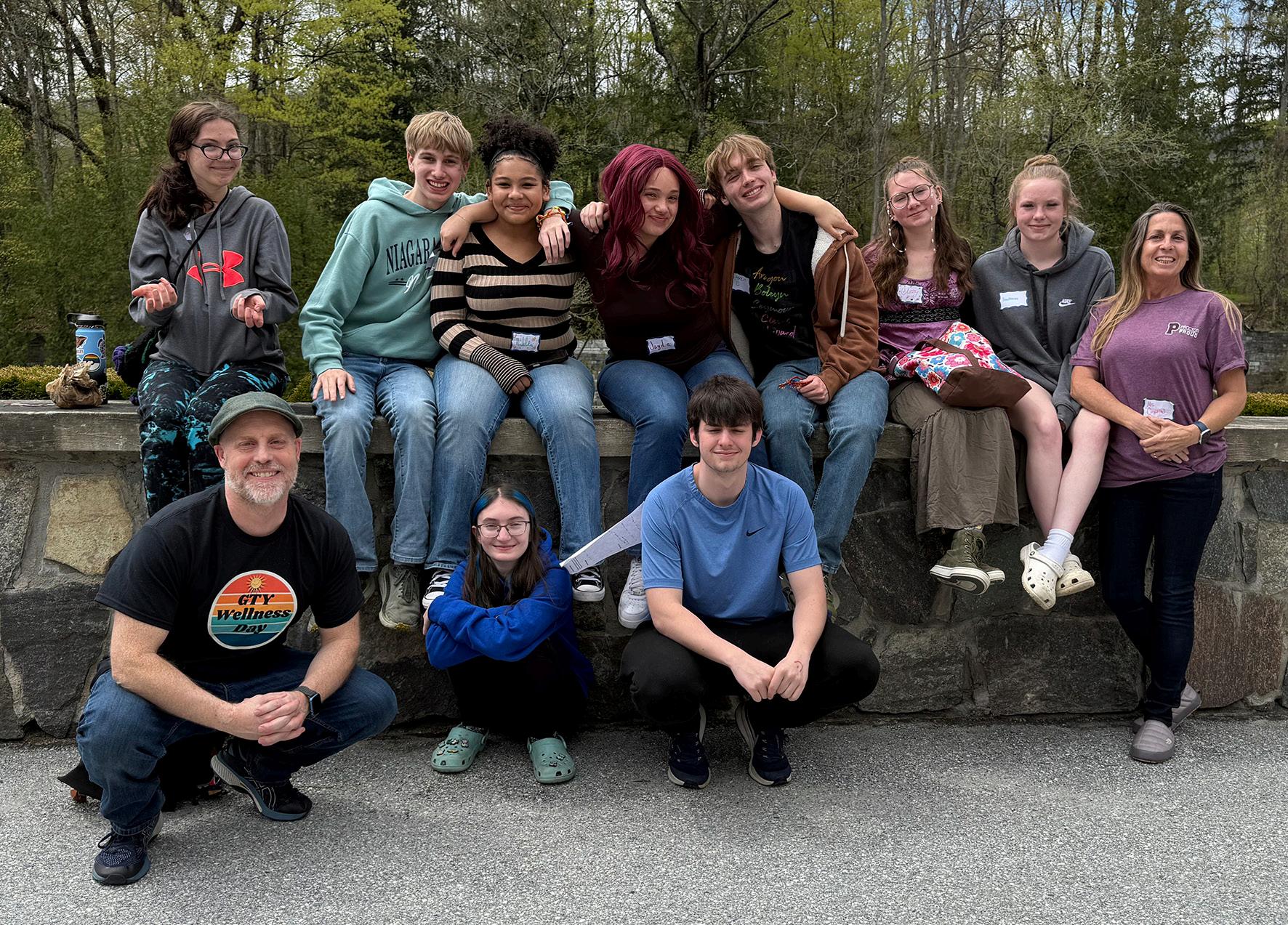
Academic stress
Family issues
Traumatic experiences
Excessive social media exposure
Shelburne, Vermont

SCS is thrilled to celebrate the first successful year of our Getting to ‘Y’ student group! Since their training in January, 19 passionate and thoughtful seventh and eighth graders have met regularly to explore the 2023 YRBS data specific to our community. They’ve engaged in meaningful conversations about student well-being and school culture, building a strong foundation for change. Looking ahead, the team is energized to continue and deepen their data analysis,
invite more students to join the effort, and collaboratively identify both the strengths and areas for growth within the community. From there, they’ll design and lead projects that celebrate what’s working and address the challenges they uncover. SCS is proud of this dedicated group of students who are helping shape a more connected, aware, and supportive school environment.
Sponsored by United Way Northwest: Our mission is to build a stronger Northwest Vermont by mobilizing our community to improve people’s lives. United Way isn’t just our name – it’s how we work. We bring together individuals, nonprofits, businesses, and government entities to fight for a strong, vibrant, and healthy community. We fight for the education, financial stability and health of every person in Chittenden, Franklin and Grand Isle counties.
The team at TA focused on addressing the mental health challenges at the root of many concerns in their school community. To raise awareness and foster support, students organized an assembly presentation and hosted an informational display table for staff and students during Suicide Prevention Awareness Month (September), Red Ribbon Week (late October), and Mental Health Awareness Month (May). A highlight of their work was a powerful spoken word performance on suicide prevention, which resonated deeply with their peers. They also hosted their school’s first-ever Mental Health First Aid training—a project years in the making—where more than 20 students, along with several adults, were trained to recognize and respond to mental health crises.
73% of students likely going to a 4-year college (increases by age)
32% of female students reported unwanted sexual behaviors, compared to 13% male students

95% of youth report that their parents/ guardians think it is wrong to vape
Less than 1% of students have ever used heroin/ methamphetamine
38% of female students attempted to lose weight in unhealthy ways compared to 5% male students
Trauma
Social media pressure
Bad coping mechanisms
Mental health issues
2x more female students have ever drank/binge drank than male students
Vergennes, Vermont
After their Data Analysis Retreat, the Getting to ‘Y’ team at VUMS agreed that even 1% of students reporting unhealthy behaviors was too many—they felt compelled to do more. To address the challenges they uncovered, the team launched a multi-faceted action plan that includes:
t assessing vaping concerns at the middle school and addressing identified gaps through targeted education,
t developing activities to strengthen student-staff relationships,
t posting positive quotes around the school to uplift and inspire,
t creating an affinity space where students can openly share thoughts and concerns,
t planning a community night focused on consent and boundaries, and
t educating peers on issues related to racism and homophobia.
94% of VUMS students think it is wrong or very wrong for someone their age to use EVPs
3% of VUMS students have ever tried to kill themselves

members
Despite their busy schedules, the team is energized by the impact of their work and is already looking ahead to building on their efforts next year.
98% of VUMS students believe that their parents or guardians feel it would be wrong or very wrong for them to use marijuana
9% of VUMS students report someone has ever done sexual things to them that they did not want
74% of VUMS students have at least one teacher or other adult in their school that they can talk to if they have a problem
6% of VUMS students ever saw someone get physically attacked, beaten, stabbed, or shot in their neighborhood
Students not feeling a sense of belonging or connection at school
Discomfort with communicating boundaries Challenges with a culture of oppressive jokes about racism, sexism, homophobic, etc.
New Hampshire

Statewide kickoff
It was a thrill to see six years of partnership and planning with our replication partner, Communities for Alcohol- and Drug-Free Youth (CADY), culminate in the launch of Getting to ‘Y’ New Hampshire this year. Liz Brochu, GTY NH Project Director at CADY, pursued this effort with energy and passion—rallying education and prevention partners from across the state to build a strong network in support of statewide replication. We also extend our deep appreciation to Jill Burke, Bureau Chief at NH DHHS BDAS, for her leadership in championing the implementation of Getting to ‘Y’ in New Hampshire and for her tireless work securing critical funding from the state’s Department of Health and Human Services to make this transformative work possible.
Before the official launch of GTY New Hampshire in 2025, several GTY teams were already active across the state— and their experience and insight proved invaluable as we scaled up. Students from Plymouth Regional High School, Moultonborough Academy, Portsmouth High School, and Kearsarge High School delivered inspiring welcome remarks at the GTY NH Statewide Kick-Off Conference and Training Event, held in Concord on January 23, 2025. UP
staff, joined by UP interns Hanae Debo and Mavis Downey from the Thetford Academy GTY team, trained 103 attendees—helping to build momentum, capacity, and enthusiasm for regional GTY school trainings that would take place across the state in the following months.
In February and March, GTY NH held seven regional trainings across the state, with UP staff co-facilitating alongside New Hampshire youth and adults trained at the January Kick-Off. We trained 23 teams, 19 of which were new to GTY! The support and collaboration of NH Prevention Professionals and statewide partners were essential in making these regional trainings both possible and successful.

103
7 1 23 19 teams new to GTY
182 youth and 48 adults trained in GTY trained co-facilitators (12 youth and 4 adults) worked with UP staff
16
Here’s a sneak peek at one team’s continued work in the months following the completion of GTY training in New Hampshire!
This year marked Franklin High School’s first participation in GTY, and they embraced the work wholeheartedly. After training, they recruited 40 students for their Data Analysis Retreat. These students reported a stronger belief that more staff and faculty are “accepting and respecting student voice and opinions,” and found it especially impactful to examine their own “local school data.”
Stephanie Wolff from Franklin Partners in Prevention (DFC) shared: “We started the Getting to ‘Y’ curriculum as a credited class at Franklin High
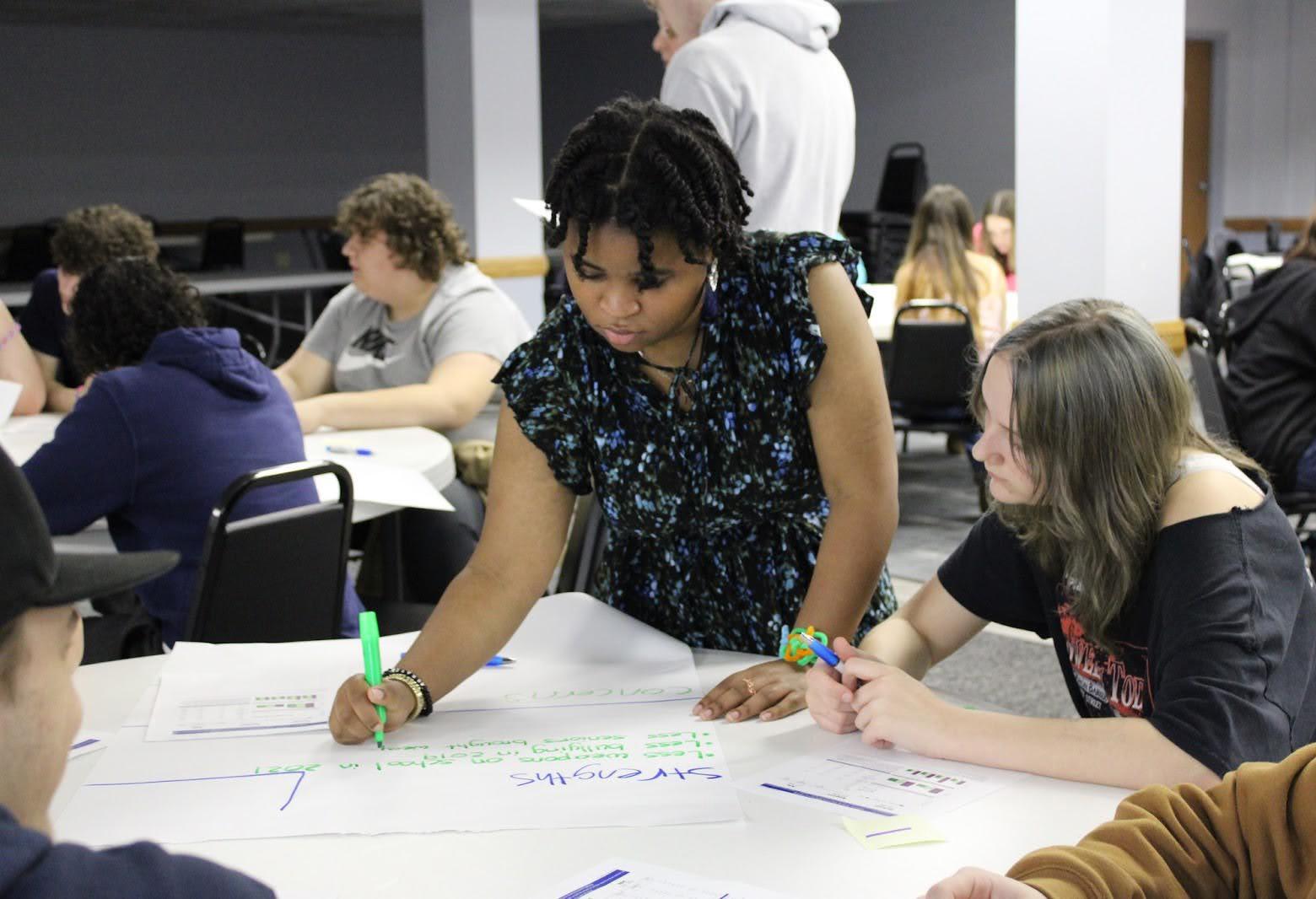
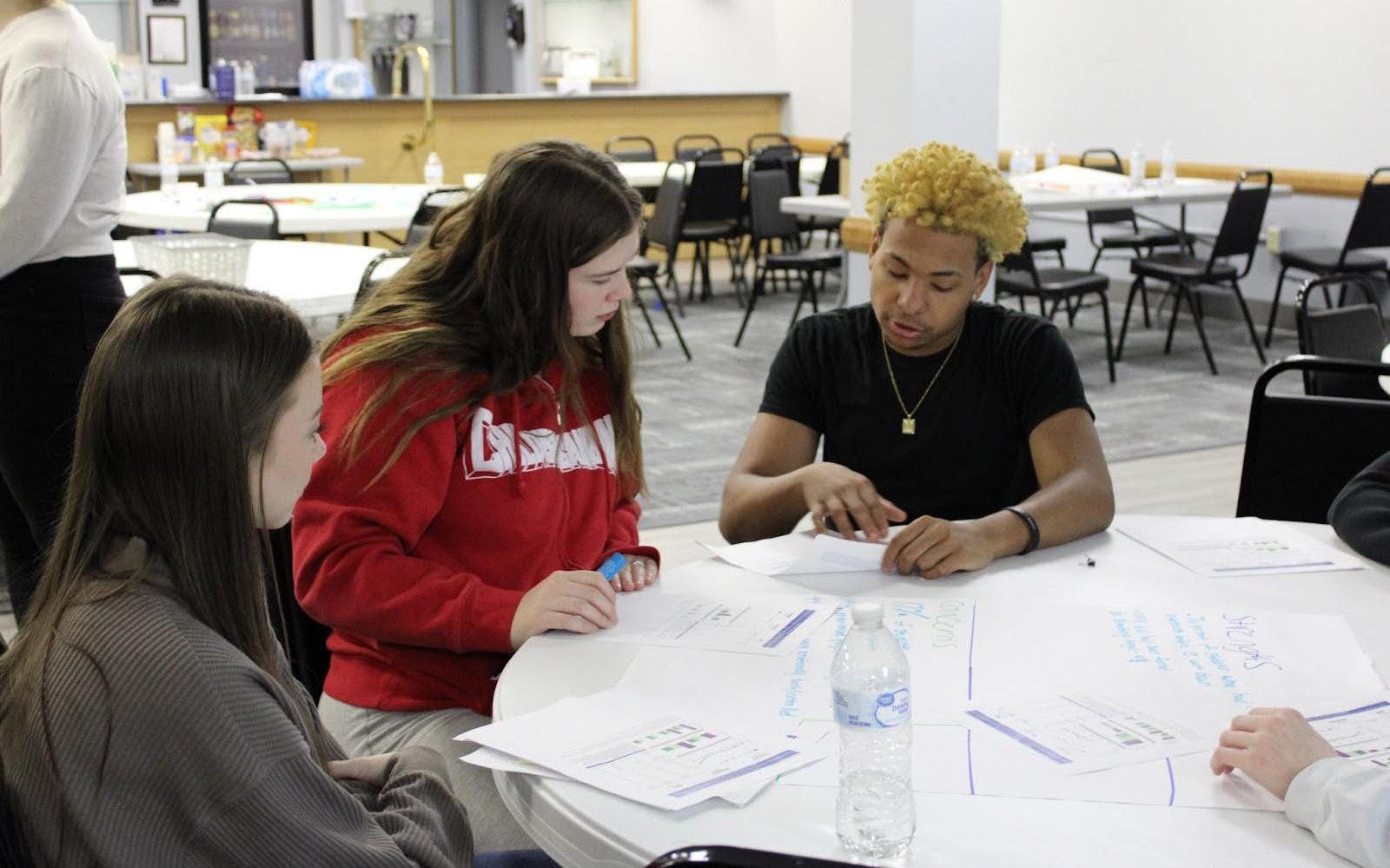
School, which has been hugely beneficial for our students and our process. We have 20 students in the class who form the core group implementing strategies in the school. When we began, we didn’t hand-select these students, so the group represents a wide range of voices. This diversity has given us valuable perspectives on many school issues. It has also allowed us to witness significant growth in students who previously hadn’t had the chance to experience a sense of empowerment in their school.”
The SPARK Ambassadors were the first to arrive and the last to leave the GTY NH Concord regional training, choosing to stay past the scheduled end for focused team time. They have carried that energy forward throughout their first GTY year this winter and spring.
GTY Advisor Melissa Minery shared: “Not only has Getting to ‘Y’ enriched the SPARK Ambassadors’ leadership and networking experiences, but the program also empowers all students to use their voices and shows adults the value of youth insights into the root causes and possible solutions to the challenges they face. As the GTY Advisor, I’ve had the pleasure of watching the Ambassadors take ownership and pride in planning and facilitating the Data Analysis Retreat. They are now committed to implementing the Community Dialogue Event before the end of the school year.”

Beyond the usual GTY benefits of training, ongoing coaching, and the support of an Advisor Network that meets regularly, GTY NH teams from public schools enjoyed additional benefits this year:
t FREE Dover Youth2Youth One Voice Youth Empowerment Toolkit for Implementation of In-School strategies
t FREE CADY Prevention Accelerator Messaging Toolkit with School Branding to raise perception of risk on substance misuse
t FREE GTY NH Promotional Material
t $2,000 GTY NH Implementation Stipend
t $1,000 STATEWIDE STUDENT SCHOLARSHIPS: Seven student scholarship awards ($1,000 each) one per region.

This year marked an exciting period of GTY team building in New Hampshire. At UP, we are deeply grateful for our partnership with the state of New Hampshire and CADY. Their enthusiasm, extensive network of prevention partners, and active engagement with existing GTY teams across the state were key to the project’s success. Looking ahead, we are eager to continue collaborating with CADY next school year. This fall, we will co-host another statewide conference and training event to build capacity and launch a new series of regional trainings for additional schools interested in joining GTY.

A big thank you to all participating NH GTY teams!
Concord High School
Dover Youth 2 Youth / Dover High School
Farmington High School
Franklin High School
Goffstown High School
Groveton High School
Hollis Brookline High School
Inter-lakes High School
Keene High School
Littleton High School
Lin-Wood Public School*
Milford High School
Moultonborough Academy*
Rivendell Academy
Pinkerton Academy*
Plymouth Regional High School*
Portsmouth High School*
Raymond High School
Sanborn Regional Middle/High School
Souhegan High School
Spark Academy for Advanced Technologies
White Mountain Regional High School
* Denotes returning team
This year, UP for Learning was fortunate to receive funding, coaching, and resources from the Association of Maternal and Child Health Programs (AMCHP) through their Innovation Hub replication program, enabling us to partner with the Indiana Department of Health (IDOH) on replicating GTY in Indiana. With support from staff in the IDOH’s Division of Maternal and Child Health, guidance from our AMCHP coach, and collaboration through webinars and group sessions with other Innovation Hub grantees, we gained valuable insights into best practices and key considerations for replication efforts and explored opportunities to pilot GTY in the state.
Our primary focus was on capacity building for future implementation. We prioritized orientation and training on GTY for IDOH staff, many of whom had not yet experienced the program firsthand. Through this training, we aimed to help the team understand what GTY looks and feels like in practice, identify what’s needed to bring the program to life locally, build a network of statewide partners to support replication, and strategize the best approaches to launch pilot teams — with the potential to expand from there.
In April, UP Program Director Kate Merrigan traveled to Indianapolis for three days to collaborate with IDOH staff and lead a GTY train-the-trainer event for IDOH personnel and Indiana Youth Advisory Board members. A highlight of the training was incorporating Zoom sessions that included youth from Vermont teams and Liz Brochu, the GTY NH Project Director. Throughout the event, we shared many laughs, meaningful conversations about the importance of youth voice in public health, and rich discussions about variations in YRBS implementation across states. The team left feeling energized and motivated to bring GTY to Indiana in some form and to reflect on how their current YRBS administration can better serve young people. We are grateful for the enthusiasm, thoughtful questions, and strong commitment to elevating youth voice demonstrated by our IDOH partners, and we look forward to continuing this collaboration!

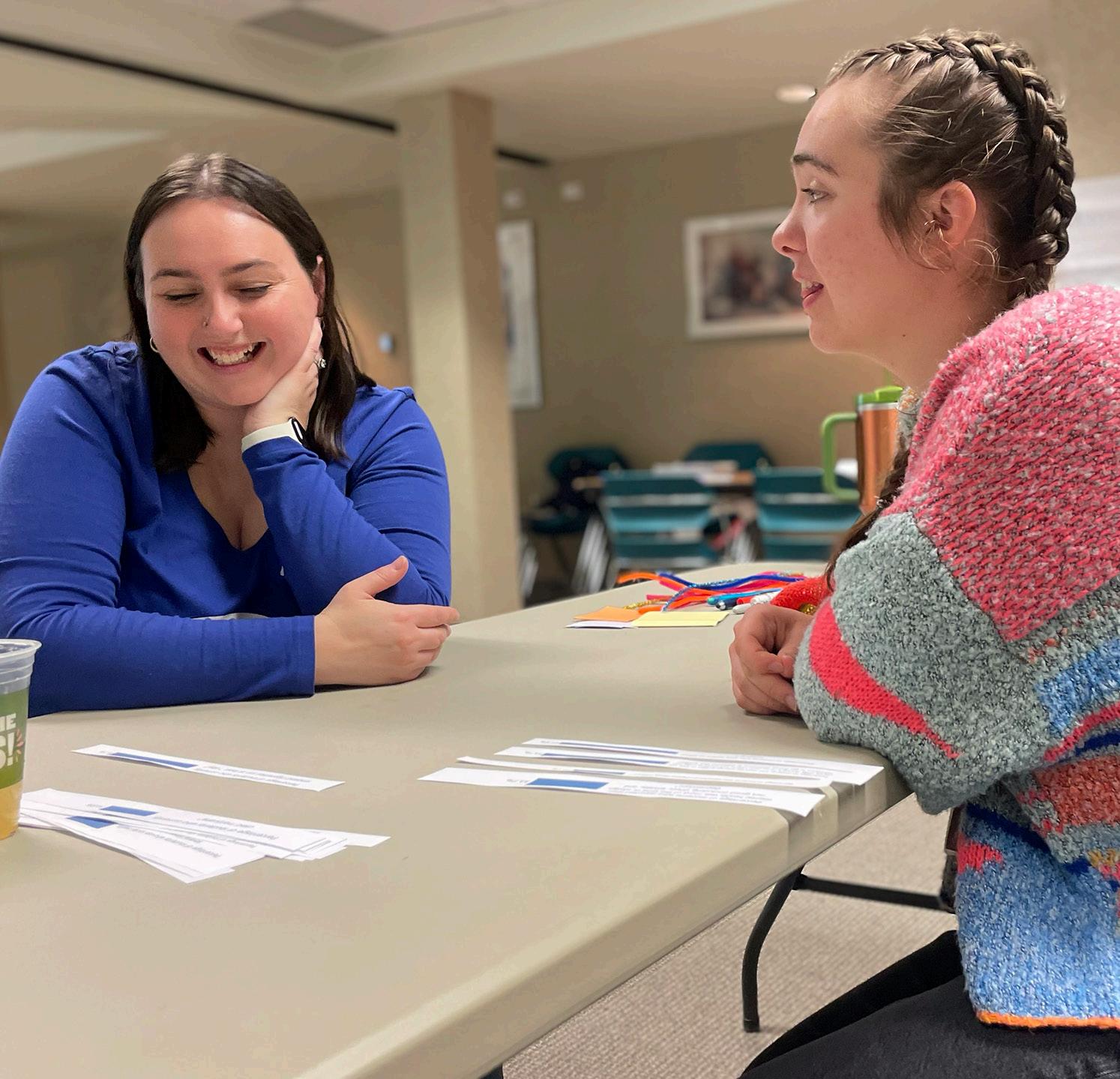
Indiana train-the-trainer event
“The problems are big but in community we can find solutions.”
—Thetford Academy student
“While it can be disheartening to look at this data about TA students, the good news is that we have motivated students who want to understand our struggles and do something about it. Not all schools have that.”
—Thetford Academy student blog
“[The GTY Wellness Day] was the best and most uplifting event we’ve ever had at this school.”
—Proctor Jr/Sr High School advisor
“The CHOICE group was top notch with an organized presentation grounded in data that highlighted key areas to address at Mt. Anthony Union Middle School. I was particularly taken by the Q&A time.
The students’ ability to respond with confidence to questions from the audience speaks volumes to their level of application. Loved it!”
—SVSU Assistant Superintendent
“Getting to ‘Y’ is an amazing program for connecting with yourself and others. I learned how to open up in a community-based setting, express concerns or areas that need improvement within our schools, and find solutions to those concerns. I participated in activities that helped strengthen my leadership skills, selfefficacy, and protective factors. I believe Getting to ‘Y’ is the start of positive change in school environments, and I would love to continue to be part of it.”
—Nildalany G., student from Spark Academy for Advanced Technologies
“I really enjoyed it and I liked that we were applying it to the real world. Because often, you look at data and you can understand and synthesize it, but you can’t apply it.”
—Lily, student from Spark Academy for Advanced Technologies
“As a member of C-Change, our goal is to have every teen’s voice heard. This has been achieved in part with the structure provided by the Getting to ‘Y’ program. After our data dive retreat, we came up with the idea of a break room for high schoolers. This safe space would have access to board games, crafts, and other activities to give teenagers an opportunity to connect while helping their social-emotional needs be met. Our C-Change club has worked hard to analyze data in our Community Dialogue Event
All of our teams are deeply committed to youth voice and equity. While not every team was able to share a summary of their progress, we want to recognize and honor their dedication to building healthier, more connected communities. We are grateful for their participation and the meaningful work they’ve done throughout the year.
to make sure that this room has everything it needs to be successful for someone who needs it.”
—C-Change Student, Pinkerton Academy
“My experience with Getting to ‘Y’ has been educational and exciting! I have stayed with the program, because I think the data analysis is important to help solve or try and prevent problems in our school, and the events help to practice and refine examining the data. I think it has a lot of potential to help my school and bring awareness to students about certain topics. I hope my work with GTY will at least help one student know that they have a voice, a choice, and that they do matter in our school community.
—Jenna S, student from Inter-lakes High School


In Personal Power and Community Connections (P2C2), elementary and middle school teams build leadership skills, explore their school communities, and plan for change through joyful, hands-on activities. Like Getting to ‘Y,’ P2C2 teams are youth-adult partnerships that use an asset-based approach to identify strengths and opportunities within their schools and communities. Through ongoing retreats, UP for Learning supports younger students—typically grades 4–6—in discovering their personal power and building community connections to drive positive change.
During these retreats, teams engage in activities that explore themes such as community, belonging, identity, values, and empathy. They also analyze data and advocate for change using their own school climate surveys, applying a Youth Participatory Action Research (YPAR) process tailored for younger students.
The teams’ efforts lead to meaningful outcomes, including addressing unkind behaviors in school, presenting their findings and ideas at faculty meetings, supporting peers in leadership development, building relationships with older student leaders, involving parents and caregivers in conversations about school practices, and planning for smooth transitions to the next school year. Perhaps the most lasting impact of P2C2 is the joy and sense of connection students gain from working together to improve their school and community for everyone involved.
The P2C2 team at First Branch Unified Union brought their multi-year project to a powerful conclusion this year, three years after the merger of their school districts. The district includes two campuses: Chelsea, serving pre-K and middle school students, and Tunbridge, serving kindergarten through 4th grade. Since coming together, the core team has been exploring a central question: How do we embrace a new, unified identity while honoring the unique histories of each community?
Last year, the team created a new mission and vision for the First Branch Unified District through extensive data collection and community engagement. Their vision reads: First Branch is a place where we value hard work and take care of each other. We respect our roots and are curious about new ways. We need old friends and new friends to build a community where everyone is supported and accepted for who they are, and where learning is innovative and meaningful.



This year, the team carried that vision forward by reviewing data from previous surveys of students, staff, and community members about what school mascot best represents the unified district. They narrowed down the top choices, facilitated a final district-wide vote, and proudly unveiled the new mascot at a celebratory all-school assembly.
The team’s dedication, resilience, and commitment to inclusive leadership helped them overcome challenges and create a shared identity that the entire school community can rally around.
Each elementary school in the LNSU district participated in three district-wide retreats to develop a climate survey, deepen their understanding of leadership, and learn how to implement Youth Participatory Action Research (YPAR) within their school communities. Teams from Hyde Park Elementary, Eden Central School, Cambridge Elementary, Waterville Elementary, and Johnson Elementary did incredible work building their teams, collecting data, and beginning to drive positive change.
Youth facilitators from Lamoille Union Middle and High Schools partnered with UP for Learning to co-plan and lead the district retreats, as well as provide ongoing support to the teams at their schools. The older students appreciated the chance to reconnect with their former teachers and schools, while the P2C2 team members valued having older, experienced peers guide them through their work.
This team brought their learning from the district-wide retreats back to their school by leading three sessions with the entire 5th grade. They guided their peers through activities focused on leadership, exploring survey data, and building community. These “mini-conferences” were co-designed and co-facilitated alongside their teachers and UP for Learning youth and adult staff. The sessions emphasized empowering students to be “upstanders” and encouraging greater youth leadership in house meetings.

This team chose to focus their action efforts on building a shared, deeper understanding of respect within their school community. They built an incredible team, meeting several times a month over lunch and developing strong practices of check-ins and connection activities. The team worked diligently to analyze their survey data and designed a creative project: hosting a door-decorating contest centered on the theme of respect. They also visited classrooms to share their work and promote the contest throughout the school.
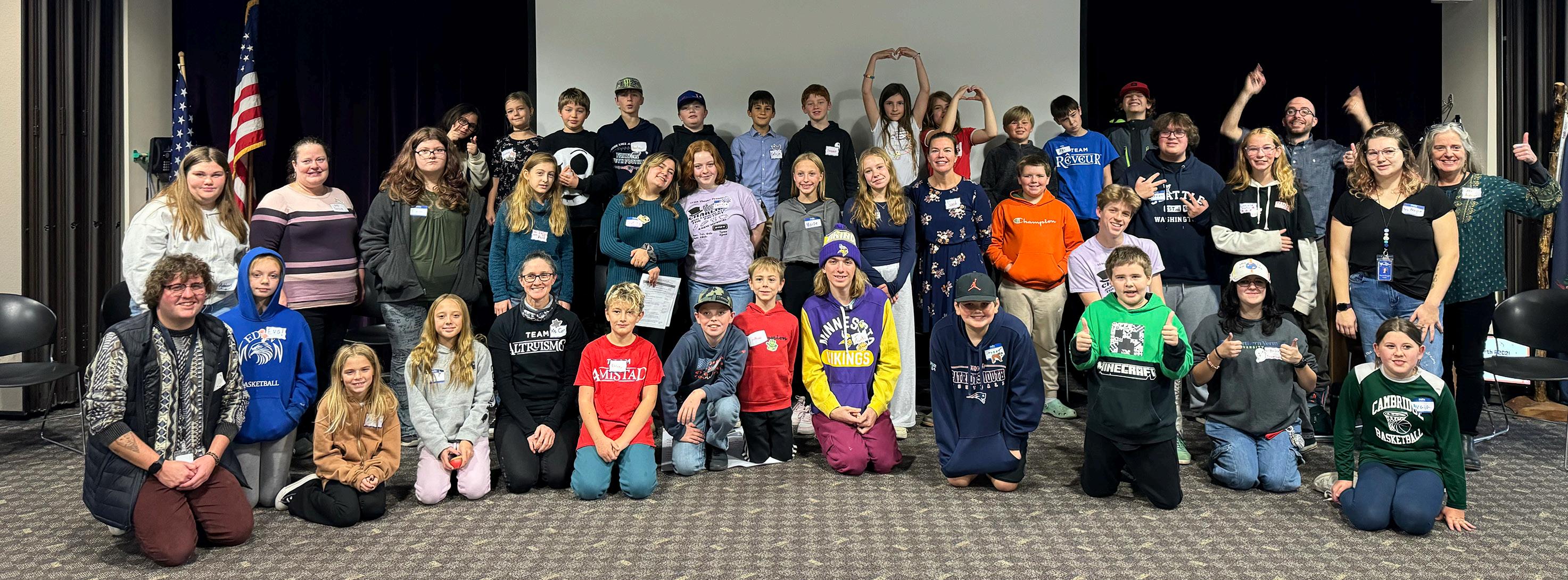
This school’s P2C2 group partnered with the new student council to dive deeper into their data, focusing on students’ sense of safety and fostering positive studentteacher relationships. The team led a CES staff meeting where they shared key survey findings and gathered valuable insights from adults on how to create meaningful change. Their thoughtful and well-planned approach left a strong impression on teachers, who praised it as “the best staff meeting I’ve ever attended” and expressed, “I wish all our meetings could be like this.”

This team chose to focus their efforts on self-regulation and coping strategies within their school. They designed, advocated for, and created two sensory regulation stations in the school hallways. The group carefully selected the fidgets and activities for each station and successfully gained administrative approval for the project. They also presented their work to the entire school, explaining the rules and responsibilities for using the stations. The team’s dedication and accomplishments this year were truly impressive.

This school’s P2C2 team identified strengths in their data, including teachers’ acceptance of students as they are and students having at least one friend and one trusted adult. Building on these strengths, the team chose to focus on enhancing the sense of safety and promoting kindness throughout the school. Since the three district-wide retreats, the team has met three times this spring to brainstorm actions that will help make their school a kinder, more welcoming place.

Rutland County, Vermont
Three elementary schools in the Greater Rutland County Supervisory Union (GRCSU)—Middletown Springs, Poultney, and Wells Village—formed P2C2 teams this spring to explore classroom climate data, deepen their understanding of leadership, and learn how to engage in Youth Participatory Action Research (YPAR). Each team brought curiosity, heart, and a strong sense of purpose to their work, laying powerful groundwork for positive change in their school communities.

The P2C2 team at Middletown Springs brought energy, creativity, and a clear sense of purpose to their work this year. Inspired by their classroom climate data, they launched the “4th Grade Fix-It Force”—a student-led initiative designed to gather ideas for school improvement from every PK–6 classroom. Team members are planning and conducting interviews with students across all grades and will use what they learn to identify key priorities and elevate student voices through the school’s morning broadcast.
After reviewing their climate data and gathering feedback from peers, Poultney’s fifth-grade P2C2 team launched “Mission: Upgrade Recess”—an initiative to make recess more fun and fair for all students. The team collaborated to develop proposals for new games, routines, and strategies to ensure everyone feels included and energized on the field and playground. Just as importantly, they reflected on youth-adult partnership and explored ways to build positive relationships with adults at school and in the community who can help bring their ideas to life.


Wells Village’s upper elementary P2C2 team approached each step of their work this year with curiosity and enthusiasm. During their monthly sessions, students explored school climate data and took part in joyful, thoughtprovoking activities that sparked meaningful conversations about values, leadership, and the culture of their classrooms and school. Building on this momentum, the team identified key community strengths and began brainstorming purposeful ways to amplify and expand them.
Pownal, Vermont
We were thrilled to bring P2C2 to Pownal Elementary School for the first time this year—and especially excited to work with the entire 5th grade! Together, we focused on building connections, exploring leadership styles, working as a team, and gathering data about the strengths and challenges of the Pownal student experience. While the absence of existing school climate data posed a challenge, we leveraged one of the group’s greatest strengths—the involvement of all 28 fifth-grade students—to generate data through engaging protocols that helped identify key assets and concerns within the school community.
Thanks to their large and enthusiastic team, the group chose to take action in three areas. They plan to:
t Host a glow dance to help students make friends and foster a sense of belonging,
t Advocate for more student input into their daily schedule to increase school connection, and
t Revise the 5th-grade behavior incentive system to make it more meaningful.
And throughout it all, the team had a blast—especially during the many joyful games led by our amazing youth co-facilitator from MAUHS, Sophia M!

Shelburne, Vermont
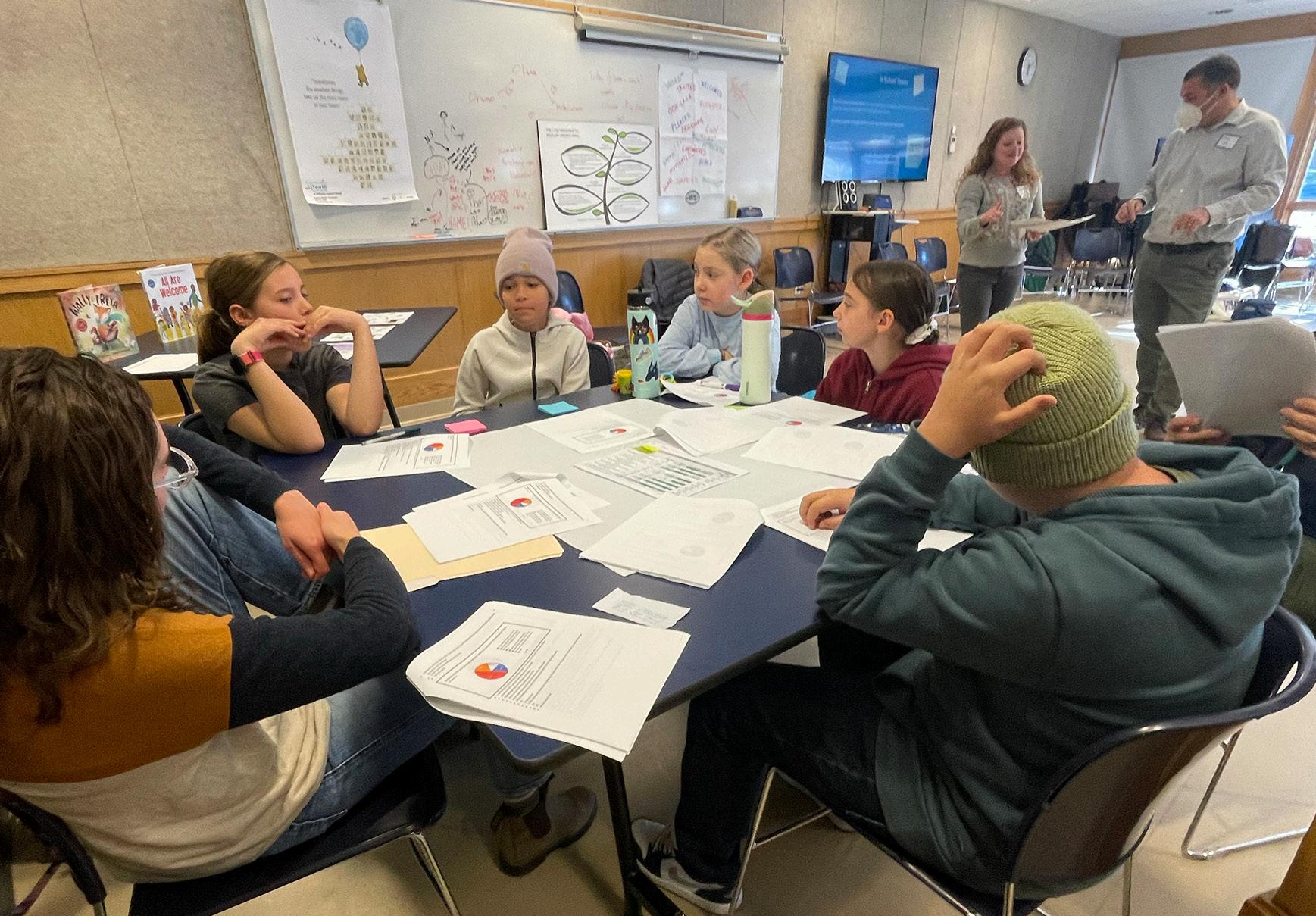
This past fall, the 4th Grade Leadership Team at Shelburne Community School (SCS) participated in P2C2 to deepen student engagement in the school’s restorative practices. The team gathered for three afterschool retreats focused on team building, leadership development, and learning about restorative approaches. They specifically explored the Social Discipline Window as a tool to examine how different aspects of school happen to, for, or with students.
Through this lens, the group identified Morning Meeting as a key opportunity to strengthen student relationships and foster a more inclusive, student-centered culture. To inform their efforts, they interviewed teachers and administrators about how Morning Meetings could better support student connection and leadership.

As Twinfield Union’s 5th graders prepare to move into a new wing of their school for 6th grade, UP for Learning has supported their whole-class P2C2 team of 25 students in helping to ensure a smooth and successful middle school transition. This spring, the team explored their identities as learners and leaders, gathered their own hopes and concerns about moving up to middle school, and collected data from current middle and high school students about their experiences. As part of this process, several team members even served on the hiring committee for two new 6th grade teachers!
For their culminating project, the team is planning an evening event for parents and caregivers to help prepare for the transition to middle school. They created the agenda, refined it, assigned roles, and prepared to lead the evening’s activities themselves.
The P2C2 team at Vergennes Union Elementary built on the strong foundation they established last year, diving even deeper into leadership and data analysis with enthusiasm and care. During the retreats, this team of fourth and fifth graders surveyed both staff and students—focusing especially on how each group perceives school rules and expectations—and used those insights to spark meaningful conversations about improving clarity, consistency, and fairness across the school. Creative activities like a newspaper design challenge and a firehouse scavenger hunt helped strengthen their teamwork and problem-solving skills. The team focused on clarifying expectations for hallways, recess, and the lunchroom. They shared their work through short film PSAs at an all-school assembly and in the family newsletter, so caregivers can help reinforce expectations at home. Their thoughtful, collaborative approach is already making a visible impact!
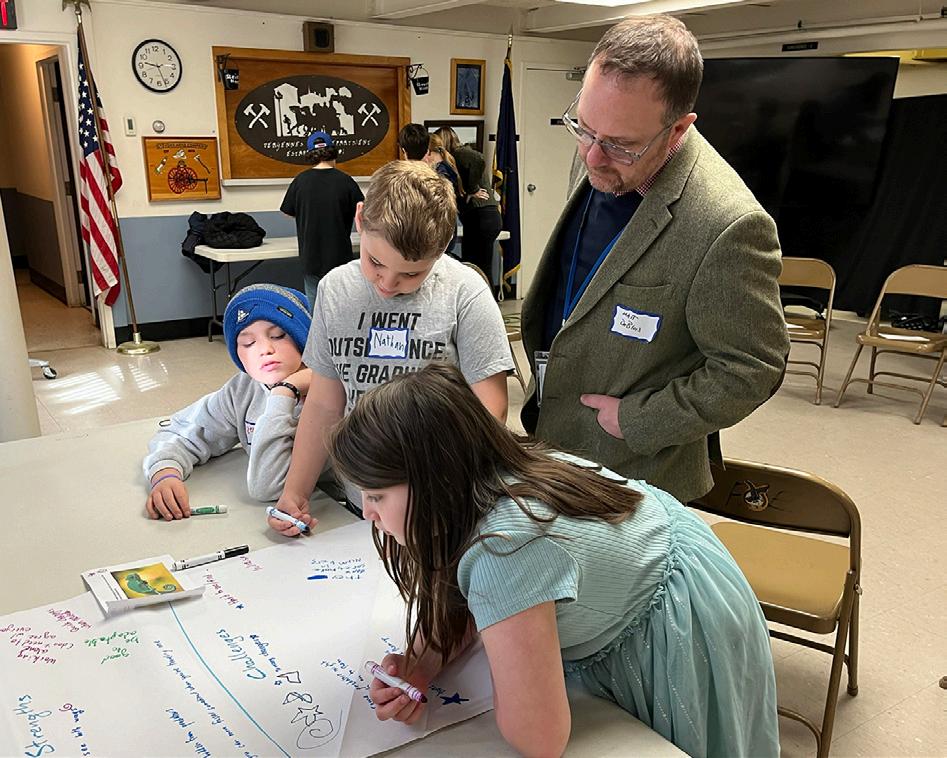
“It is rewarding when you can see this work in action and when you make those connections, like working with the elementary schoolers and seeing them in the places that you once were. We get to be the people they need at this time.”
—High school facilitator of LNSU P2C2 retreats
“Watching the students interact as they consider how to be good leaders and make positive choices for the community is empowering for our fifth graders. They absolutely love to be asked about their opinions, and even more, they love to think about possibilities for change.”
—Patience Jenkins, 5th Grade Teacher
“Each of us has different strengths and ways of doing things, so when we come together we are even stronger and able to do a lot that we couldn’t do alone.”
—Blake, 4th Grade student

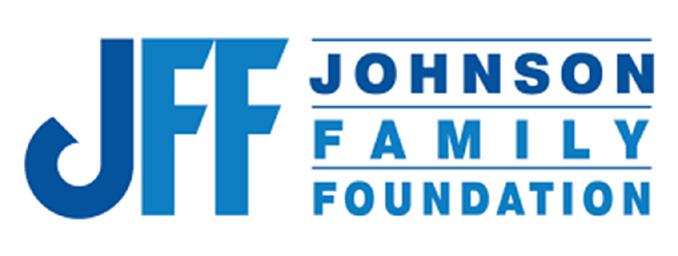

Thank you to all the schools, organizations and coalitions who sponsored their work.
Thank you to the Johnson Family Foundation and to the Vermont Department of Health: Division of Substance Use Programs (DSU) and Division of Family and Child Health (FCH) for their continuing support of GTY and P2C2 in Vermont. Thank you as well to the New Hampshire Department of Health & Human Services, who sponsored the work in New Hampshire, and the Association of Maternal and Child Health Programs, who sponsored this year’s Indiana project.
Design & layout by Dana Dwinell-Yardley: ddydesign.com

GTY and P2C2 are UP for Learning programs. For more information, visit upforlearning.org or contact us:
Liberty Belote, GTY Program Associate liberty@upforlearning.org
Lindsey Halman, Executive Director lindsey@upforlearning.org
